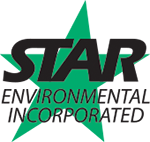Historic neighborhoods, and historic homes have risen in popularity, especially among the younger generation (Millennials). Respect for community and meaning as well as craftsmanship and authenticity in construction, materials and price make these neighborhoods and their homes more marketable to this growing audience.
Of course with an older home, comes old materials with old finishes. One of those finishes could very well be lead-based paint. Lead-based paint can be very dangerous, especially to pregnant women and children but if handled properly, there are many ways to reduce the hazards of working on or around areas that contain lead paint.
Star Environmental would like to share some important points to remember concerning removal and/or handling lead-based paint:
- Children and pregnant women must not do any lead paint removal work, and they should stay out of the work area until clean-up is complete. If you’re not sure you can clean up every day, arrangements for temporary living quarters should be made.
- Work in one room at a time, and seal off the work area from the rest of the house, including any heating or ventilation ducts, using heavy plastic sheets (6-mil thick is good).
- EVERYTHING in the room (furniture, rugs, carpets, floors, bedding, drapes, dishware, food, toys, etc.) must be removed, or covered with TWO sheets of plastic (again, heavy, 6-mil plastic) and all the seams taped. Plastic used to cover the floor should be secured to the wall or baseboard with duct tape.
- Workers should wear disposable coveralls, shoes, hair covering, goggles and a respirator approved by NIOSH (the National Institute of Occupational Safety and Health) or MSHA (the Mine Safety and Health Administration). Approved respirators will have an approval number on them, ( i.e., TC-21C-xxx). Only HEPA (High Efficiency Particulate Air) respirators will filter lead dust and fumes. Simple paper or fabric dust masks will NOT protect a worker from lead dust.
- To avoid ingesting lead, workers should not eat, drink or smoke on the job.
- Workers need to clean up carefully. Before leaving the work area, they should dispose of their coveralls, and remove the dust from their clothes with a HEPA (High-Efficiency Particulate Air) filtered vacuum cleaner. And workers should shower as soon as they can after work, so they don’t spread lead dust around their homes.
These tips for working on and around surfaces with lead paint are enough to get you thinking about how best to approach that historic home renovation project. Remember, any painted surface that may have been painted before 1970 may very well have lead-based paint on it.
And if your job is more than you can handle, contact your friends at Star Environmental for assistance.



